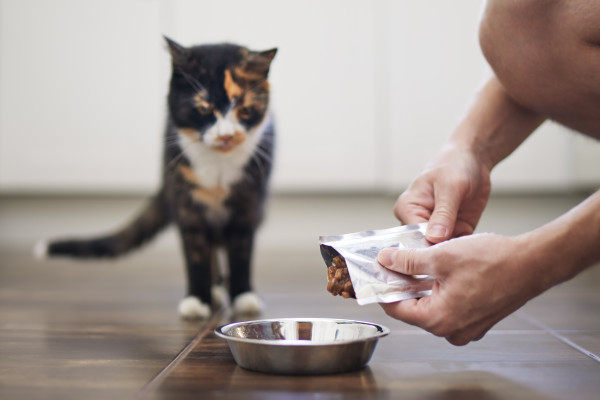
Understanding the Fine Line Between Nutrition and Drug Claims in Pet Food and Supplements
In the fast-changing world of pet nutrition, consumers are increasingly attracted to products that provide more than just basic nourishment. Claims like “supports joint health,” “calms anxiety,” or “boosts immunity” have become common on pet food and supplement labels, but not all of these are legally permissible. Understanding where the line is drawn between nutritional and drug claims is key to keeping your product compliant, marketable, and safe from regulatory scrutiny.
Regulatory Oversight: FDA, AAFCO, and States
There are many agencies that regulate pet food in the United States. For example, the US Food and Drug Administration Center for Veterinary Medicine (FDA CVM) oversees the federal regulation of all animal food and drugs, including the evaluation of claims. The Association of American Feed Control Officials (AAFCO) provides model regulations and ingredient definitions that guide both label claims and state-level oversight. State feed control officials often enforce these rules and review labels during product registration. Even if a product is safe and effective, a label with incorrect claims may be flagged or denied at the state level.
What Is a Functional Claim?
Functional claims, also known as structure/function claims, describe how a product or ingredient supports the normal structure or function of the body. These claims are permitted in pet food when worded carefully and supported by evidence. They are distinct from drug claims, which suggest treatment, prevention, or cure of a disease.
Examples of permitted structure/function claims:
- “Supports healthy skin and coat”
- “Helps maintain healthy digestion”
- “Supports joint function”
- “Helps maintain a healthy immune system”
These types of claims are acceptable under both the FDA CVM and AAFCO guidelines, as long as they do not imply disease treatment or prevention.
The Line Between Food and Drug
According to the Federal Food, Drug, and Cosmetic (FD&C) Act, a product is considered a drug if it is intended to diagnose, cure, mitigate, treat, or prevent disease, or affect the structure or function of the body in a non-nutritional way.
This means that while you can say a product “supports normal joint health,” stating that it “treats arthritis” shifts the product into drug territory, triggering regulatory requirements, including FDA approval, that most pet food products are not designed to meet.
Examples of impermissible drug claims for non-drug food products:
- “Reduces inflammation from arthritis”
- “Cures anxiety”
- “Heals hot spots”
- “Relieves pain”
These statements are classified as drug claims and are not allowed unless the product is a formally approved animal drug.

Photo by Kolesnikovsergii
Pet Supplements: A Regulatory Gray Area
Unlike human dietary supplements, pet supplements do not have a distinct federal regulatory category. As a result, calming chews, probiotics, and joint powders are often regulated as feeds or unapproved drugs, depending on their claims and intended uses.
Best Practices for Marketing Pet Supplements:
- Use safe, structure/function language like “support” or “maintain.”
- Avoid words like “promote,” “treat,” “prevent,” “relieve,” or “heal.”
- Ensure that claims are scientifically substantiated with data or research.
- Collaborate with a regulatory consultant, such as BSM Partners, or industry organizations like the National Animal Supplement Council (NASC), to ensure compliance.
The Role of NASC
The NASC plays a crucial role in guiding companies through the regulatory challenges involving supplements. Retailers and regulators recognize the NASC Quality Seal as a mark of compliance and responsible manufacturing.
NASC also offers pre-approved claim vocabulary and guidelines for labeling and documentation. Participating in NASC programs shows a commitment to best practices and can help safeguard your business.
Cost Implications of Non-Compliance
Pursuing a claim that falls outside regulatory boundaries isn’t just a legal issue—it can become a major financial liability. Brands that move forward with impermissible claims often face costly packaging redesigns, halted distribution or delisting by retailers, reformulation of products, potential legal challenges, or reputational damage.
Making a mistake early on due to bad advice or shortcuts can be costly to fix later. That’s why obtaining accurate, strategic guidance from the start is essential.

Photo by Chalabala
“But Brand X Does It…”
One of the most common catchphrases from brands is: “Brand X says this on their label - why can’t we?”
This line of thinking can be dangerous. You don’t know whether they’ve substantiated their claims, whether regulators have flagged them (yet), if they’ve quietly removed the claim after enforcement, what their product formulation or ingredient sourcing looks like, or whether they are even registering their products!
Don’t base your compliance strategy on someone else’s risk-taking. Just because another brand is “getting away with it” doesn’t mean your brand should follow suit. As Nate Thomas, Co-Founder of BSM Partners often says, “Stop trying to break the same rules your competitors are breaking and get real with the science.”
Litigation Risk: When Misleading Claims Go Too Far
There is a precedent, particularly in states like California, for lawsuits related to misleading or unsubstantiated on-pack claims. These lawsuits can be brought by consumers, competitors, or advocacy groups. Even if a product is safe, how it’s marketed matters, and courts take truth in labeling seriously.
This is yet another reason to play it safe. The expense of defending your brand in court or settling a claim can dwarf the cost of doing it right from the start.
Structure-Function Claim Checklist
To stay compliant:
- Ensure your product is safe and correctly labeled.
- Stick to structure/function claims that describe how your product supports normal health, not how it cures or treats.
- Avoid using disease-related terms unless your product is classified and approved as an animal drug.
- Support your claims with scientific evidence and maintain proper documentation.
- Ensure claims are linked to ingredients that are legally defined in the AAFCO Official Publication or otherwise recognized as safe.
- Avoid comparing your labeling strategy to those of others who might not be compliant.
- Be proactive! Litigation, reformulation, and rebranding are far more expensive than sound regulatory planning.
- Partner with experts who understand the landscape and will help you navigate it wisely.
How BSM Partners Can Help
At BSM Partners, we specialize in guiding pet food and supplement companies through the regulatory landscape. Our regulatory, veterinary, and product development teams provide expert support to ensure your brand is both compliant and competitive.
Whether you're launching a new supplement line, developing functional claims, or just reviewing your current product labels, we help you avoid costly missteps and get it right the first time.
Let’s create something that is compliant, credible, and successful together!
Follow us on LinkedIn for the latest updates on all things happening here at BSM Partners.
About the Author
Dr. Emily Taylor is Manager of BSM Assurance, BSM Partners' Food Safety, Quality Assurance, and Regulatory Services team. Dr. Taylor is a nutritionist with over 14 years in the animal industry. She resides in Lafayette, Indiana, with her family, showing dressage horses.
This content is the property of BSM Partners. Reproduction or retransmission or repurposing of any portion of this content is expressly prohibited without the approval of BSM Partners and is governed by the terms and conditions explained here.